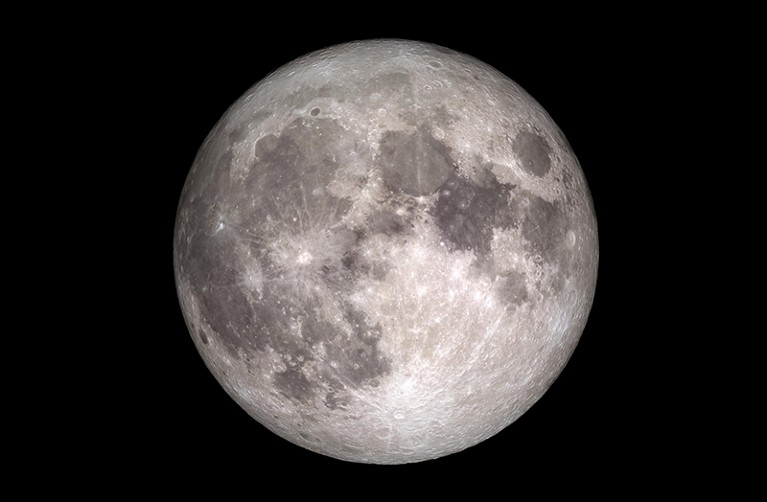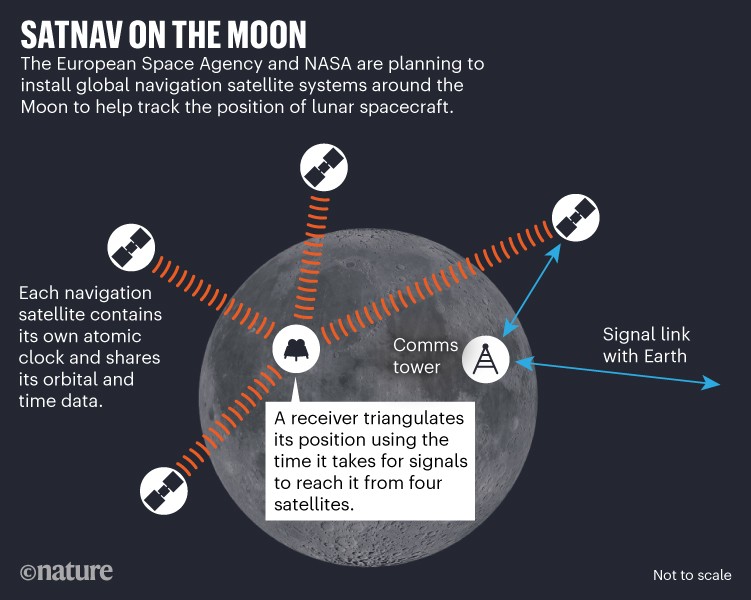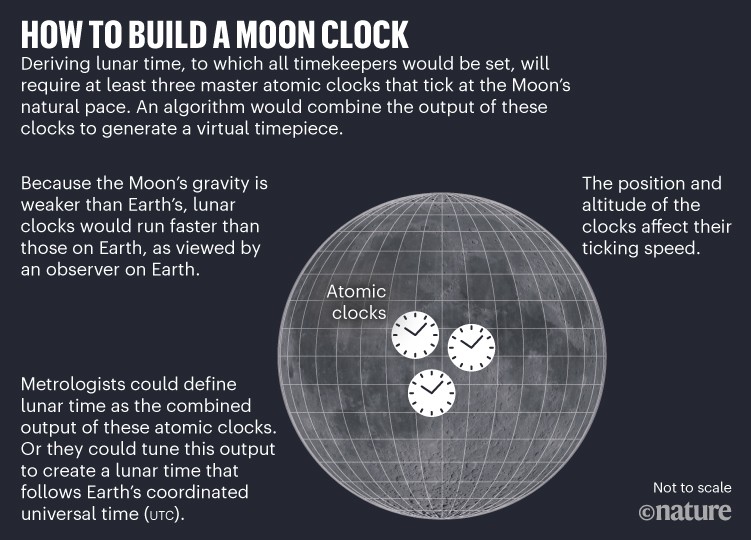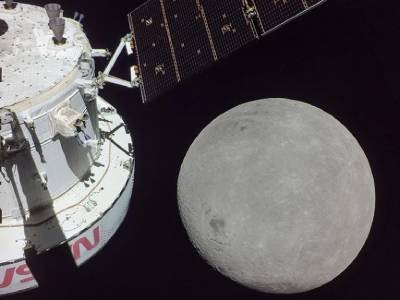What time is it on the Moon? – Nature.com

The coming decade will see a resurgence in lunar exploration — including dozens of missions and plans to establish permanent bases on the Moon. The endeavours pose myriad challenges. Among them is a subtle, but fundamental, question that metrologists worldwide are working to answer: what time is it on the Moon?
“We’re just starting to lay this out,” says Cheryl Gramling, an aerospace engineer who leads the position, navigation and timing team at NASA’s Goddard Space Flight Center in Greenbelt, Maryland.

The $93-billion plan to put astronauts back on the Moon
The Moon doesn’t currently have an independent time. Each lunar mission uses its own timescale that is linked, through its handlers on Earth, to coordinated universal time, or utc — the standard against which the planet’s clocks are set. But this method is relatively imprecise and spacecraft exploring the Moon don’t synchronize the time with each other. The approach works when the Moon hosts a handful of independent missions, but it will be a problem when there are multiple craft working together. Space agencies will also want to track them using satellite navigation, which relies on precise timing signals.
It’s not obvious what form a universal lunar time would take. Clocks on Earth and the Moon naturally tick at different speeds, because of the differing gravitational fields of the two bodies. Official lunar time could be based on a clock system designed to synchronize with utc, or it could be independent of Earth time.
Representatives of space agencies and academic organizations worldwide met in November 2022 to start drafting recommendations on how to define lunar time at the European Space Research and Technology Centre of the European Space Agency (ESA) in Noordwijk, the Netherlands.
Decisions must be made soon, says Patrizia Tavella, who leads the time department at the International Bureau of Weights and Measures in Sèvres, France. If an official lunar time is not established, space agencies and private companies will come up with their own solutions, she says. “This is why we want to raise an alert now, saying let’s work together to take a common decision.”
Tracking satellites
The most pressing need for lunar time comes from plans to create a dedicated global satellite navigation system (GNSS) for the Moon, similar to how GPS and other satellite navigation networks enable precise location tracking on Earth. Space agencies plan to install this lunar GNSS from around 2030. ESA approved a lunar satellite navigation project called Moonlight at its ministerial council meeting on 22 and 23 November 2022 in Paris, and NASA established a similar project, called Lunar Communications Relay and Navigation Systems, last January.
Until now, Moon missions have pinpointed their locations using radio signals sent to large antennas on Earth at scheduled times. But with dozens of missions planned, “there’s just not enough resources to cover everybody”, says Joel Parker, an engineer who works on lunar navigation at the Goddard Center.

As a first step, from 2024, ESA and NASA will trial deriving positions on the Moon using faint satellite navigation signals from Earth-based craft. Next, the lunar GNSS projects plan to place dedicated satellites around the Moon, each containing their own atomic clock. A receiver, for example on the Moon’s surface, will then triangulate its position using the time it takes for satellite signals to reach it. ESA has planned an initial constellation of four spacecraft that would cover navigation at the lunar south pole, which harbours much of the Moon’s water and is an important target for exploration, says Jörg Hahn, an engineer working on ESA’s Moonlight project.
Moon missions will also need an official lunar time to cooperate and communicate, says Hahn. “All this has to trace to one kind of a time reference, otherwise you have chaos and things do not work together.”
Another open question, says Hahn, is whether astronauts would use universal lunar time everywhere on the Moon. Although lunar time would remain the official timescale, its users might, as on Earth, want to offset it in time zones that link to the Sun’s position in the sky. This is less a question for metrologists and more one of convention. “When somebody really lives there on the Moon, I think it makes sense,” he says.
Characterizing time
Defining lunar time is not simple. Although the definition of the second is the same everywhere, the special theory of relativity dictates that clocks tick slower in stronger gravitational fields. The Moon’s gravitational pull is weaker than Earth’s, meaning that, to an observer on Earth, a lunar clock would run faster than an Earth one. Gramling estimates that a lunar clock would gain about 56 microseconds over 24 hours. Compared with one on Earth, a clock’s speed would also subtly change depending on its position on the lunar surface, because of the Moon’s rotation, says Tavella. “This is a paradise for experts in relativity, because you have to take into account so many things,” she adds.
Defining a lunar standard, with which all clocks are compared, will involve installing at least three master clocks that tick at the Moon’s natural pace, and whose output is combined by an algorithm to generate a more accurate ‘virtual’ timepiece.
What happens then depends on which option metrologists choose. They might decide to base lunar time on utc. In that case, this virtual lunar time would be synchronized regularly with terrestrial utc. Between the check-ins, the lunar master clocks would keep marking time until the next synchronization. This has the advantage of being simple for users back on Earth to interact with.

The alternative would be to use the synthesized output of the lunar atomic clocks as the Moon’s own independent, continuous time, and to track its relationship to utc. That way, even if the connection with Earth is lost, clocks on the Moon will still agree with each other and allow safe navigation and communications, says Gramling. Establishing an independent time is a model that will also work for the more-distant planets that space agencies are ultimately targeting, such as Mars. Transmitting utc there would be more complicated than to the Moon, she adds.
In this scenario, days on the Moon could even be defined differently from those on Earth, to account for the time from solar noon to solar noon taking an average of 29.5 Earth days. Earth days will always matter to astronauts, given the human need for sleep on a roughly 24-hour cycle. But the definition is something metrologists will need to agree on.

NASA’s Orion spacecraft reaches the Moon — in pictures
Metrologists will also need to decide where on the Moon to place the master clocks. As on Earth, the devices’ altitude will affect ticking speed. The clocks could be in lunar orbit or on the surface, says Hahn. “This is what we are discussing right now with our NASA colleagues.”
Space agencies are also considering other necessary standards — such as which maps of the lunar terrain and coordinate systems to use for navigation — through the Interagency Operations Advisory Group, a council of national space agencies and the United Nations International Committee on GNSS. To make various countries’ systems interoperable, reference systems will have to be agreed internationally, says Gramling.
With ESA’s help, NASA is developing a framework called LunaNet, for which it hopes to get international buy-in. LunaNet consists of a set of rules that would enable all lunar satellite navigation, communication and computing systems to form a single network similar to the Internet, regardless of which nation installs them. Setting lunar time is part of a much bigger picture.
“The idea is to produce a Solar System internet,” says Gramling. “And the first part would be at the Moon.”





